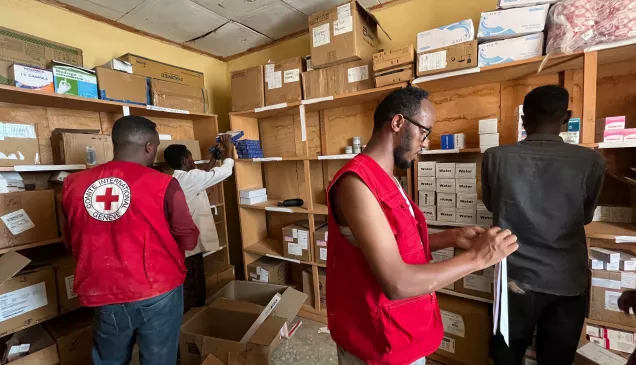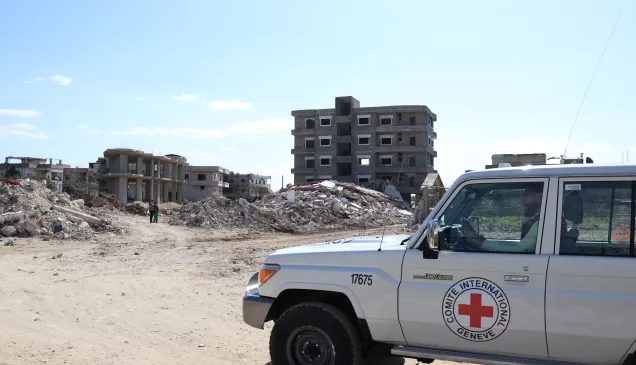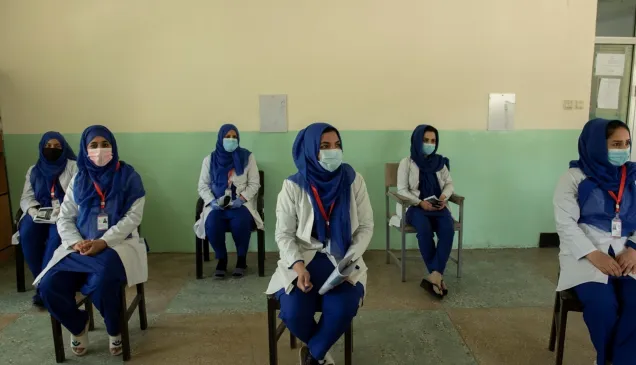Philippines: Bouncing back from despair

As part of its mandate, the ICRC supports the medical treatment of people wounded in armed conflict – without distinction.
In Mindanao, this includes regular assistance to five hospitals and ad hoc support to emergency rooms treating weapon-wounded patients at these hospitals – Cotabato Memorial Hospital (Amas, Kidapawan City), Dr Amado Diaz Provincial Hospital (Midsayap, North Cotabato), Agusan Provincial Hospital (Agusan del Sur), Zamboanga City Medical Center and Maguindanao Provincial Hospital (Shariff Aguak, Maguindanao).
In the first half of 2015, 171 weapon-wounded were admitted to ICRC-supported hospitals in Mindanao. Of these, 43 were supported in the reimbursement of their treatment costs.
Injuries that lead to amputation are aided through the ICRC's collaboration with the Davao Jubilee Foundation (DJF), a non-profit providing services to people with physical disabilities. From January to July, nearly 250 patients received services at the DJF centre – 61 of these were conflict-related amputees, directly supported by the ICRC.
Among them is Roel Daanoy, 54, from Bislig City in north-eastern Mindanao. This is his story.
Can you tell us about the incident that eventually led to your amputation?
It happened on 19 June 1998 in the hinterlands of Mabog district, San Roque village in Bislig City, Surigao del Sur. I was part of the Citizen Armed Force Geographical Unit assigned to secure a huge milling company in the area.
On our way back, after confiscating a truckload of illegal timber in a remote community, we were attacked by an armed group. Everyone in our team was wounded. I was the worst.
What was your reaction when you found out that you would lose a limb?
The decision to remove my left leg came after a year of confinement in a hospital in Manila. The doctor relayed the news through my wife. My immediate reaction was that I would rather die than lose a limb, but it had to be done.
How did it change your life?
At first, I could not imagine a life with only one leg. I would lose my job and would need to find another source of income. I worried about the future.
It took me a year to physically recover, and even longer to fully accept the situation.
It has taught me to value the things that I have and to eventually appreciate being given a second chance at life.
What helped you to move on?
My daughter was born three years later; that pushed me to go on. The support from my wife was also instrumental to my recovery.
I am grateful for the support of the ICRC, through the DJF, which included providing me with an artificial leg and physical therapy, and covering future repairs. Having a prosthesis helps me to carry out my daily activities and has made it possible for me to provide for my family.
Simply put: the leg has boosted my morale and has given me a sense of completeness.
How is your life now?
I have been working as a security guard in the same milling company since 2009 where I earn 200 pesos daily.
I trek at least 2 kilometres of rough terrain to get to work every day, to save on transportation costs.
My daughter is now 14 years old and my dream is for her to finish high school, and hopefully college. I can't imagine how I can possibly support her college education, but I will do everything I can to make this dream happen.



